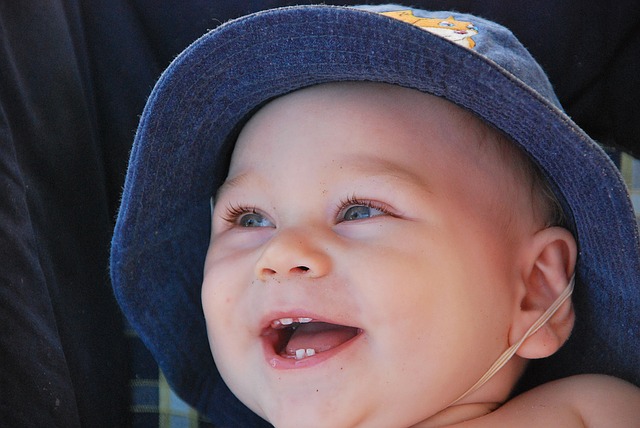–An uncomfortable, fussy, teething baby upsets the entire household. Paso Robles dentist, Dr. Lisa Lu Davis recently published some tips to help parents understand the teething process and help their baby feel better.
Baby’s first teeth, the two lower incisors, are usually the first to grow in. This happens between the ages of six to 10 months but can start earlier. The ages can vary from child to child, some starting at few months old or not until almost a year old. The eruption (a dental term meaning teeth are growing through the gums) progression usually starts with the two lower incisors followed by the two upper teeth around eight to 13 months followed by:
- The lateral incisors on each side of the central incisors start to grow in both the upper and lower jaws between the ages of eight and 16 months.
- Upper and lower molars between 13 and 19 months
- “Eye” teeth, or canine teeth between 25 and 33 months
The average child has their full set of 20 primary (baby) teeth by age three.
Normal teething symptoms
Babies can be very uncomfortable and fussy during teething. They can have trouble sleeping, be irritable, not be hungry and drool more than usual. While these symptoms can worry parents, especially new parents, they are not necessarily cause for a doctor visit.
Other symptoms such as fever, diarrhea or a rash are not symptoms associated with teething, even though the baby might have them while teething. The American Dental Association recommends that parents make an appointment with their child’s pediatrician anytime a fever, diarrhea or rash are present.
Helping baby feel better
Teething takes about eight days from the time the teeth start to erupt until they are fully through the gum. A parent might notice a blue-grey bubble, known as an eruption cyst, on the gum when a tooth is about to erupt. It will usually go away once the tooth has come through the gum, but in the meantime, baby, parents and siblings can all feel upset.
Dr. Davis recommends:
- Massaging the gums with a clean finger or a soft wet cloth
- Offer baby a chilled (not frozen) teething ring. Pressure from a cold object can temporarily relieve the discomfort. Be sure to read all of the information that comes with the teething rings and follow the manufacturer’s direction. Avoid teething rings that contain the plastic softener “diisononyl phthalate.”
- Teething biscuits can be given to babies over six months who have started eating solid food
- Pain-relieving medications can help but discuss any use with your child’s dentist or pediatrician first.
- Wipe away the drool frequently to help avoid skin irritation
What to avoid
The Federal Drug Administration recommends avoiding
- Teething treatments containing benzocaine or belladonna for children under 2 years old due to serious side effects. Consult with the child’s dentist or pediatrician before using any gels or products sold as teething treatments.
- Teething necklaces, bracelets or other jewelry worn by the child due to dangers such as choking, strangulation, injury to the mouth and infection
Ask the dentist
Even though teething is a natural and normal process of growing up, parents can have some peace of mind by having baby’s mouth and gums examined by a dentist. Complications rarely occur, but knowing that all is normal is reassuring.
Lisa Lu Davis, DMD, Inc.
2120 Golden Hill Road, Suite 103
Paso Robles CA 93446
(805) 238-6777
This press release is by Paso Robles marketing and SEO company Access Publishing, 806 9th Street, #2D, Paso Robles, CA 93446, (805) 226-9890.


